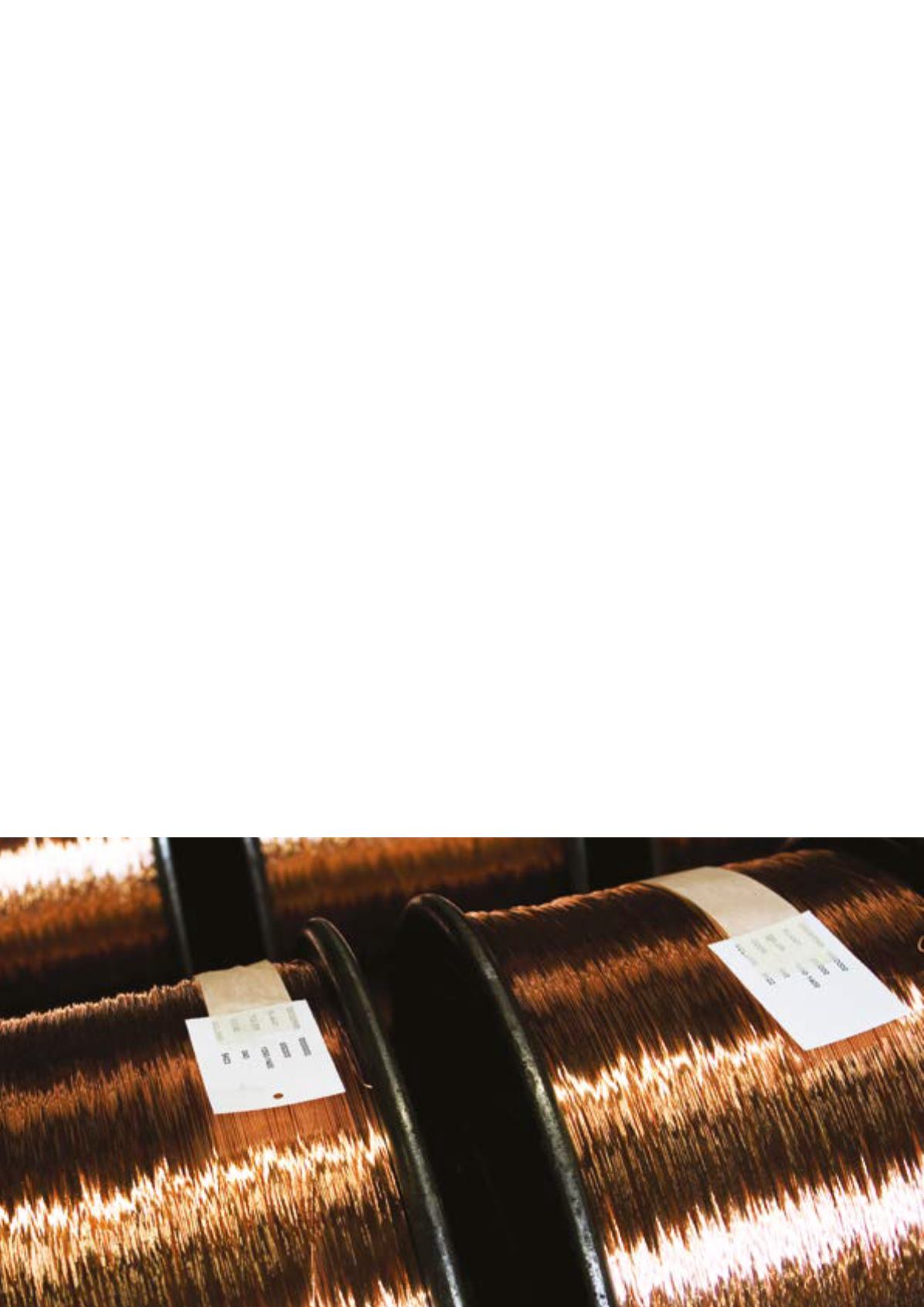

Consolidated Financial Report |
DIRECTORS’ REPORT
2014 Annual Report
Prysmian Group
108
The main raw materials used by the Group in its production
processes are copper, aluminium, lead, special glass and
coating for optical fibres, as well as various petroleum deriv-
atives, such as PVC and polyethylene.
In a market environment characterised by continued global
economic fragility with only a slight recovery in volumes,
average prices of the principal commodities were generally
lower in 2014 than in the previous year. In the case of base
metals, copper and lead prices were significantly lower than
the year before, down by asmuch as 6%, reflecting persistent
stagnation in some West European countries and a gradual
slowdown by emerging market economies (China, Russia,
Brazil) leading to fears about possible reductions in future
demand by these countries. Aluminium went against this
trend, posting a slightly higher price than the previous year
mainly due to increased use of this metal in the automotive
sector. The Brent crude price was generally in line with 2013
during the first half of the year but went into steep decline
from August, to close the last session of 2014 at USD 57/
barrel, representing a loss of about 50% from the year's
highs in June. Among the petroleum derivatives, the price of
ethylene fell significantly, leading to a consequent reduction
in polyethylene prices, especially in the second half of the
year. Even PVC and plasticiser prices fell, reflecting the lower
commodity costs and still weak demand in the construction
industry.
Once again in 2014, the Prysmian Group was able to deal
with fluctuations in base metal prices through strict appli-
cation of its hedging policies and daily matching between
purchase and sales commitments. Sales price adjustment
mechanisms, combined with attentive hedging, helped
in fact to mitigate the impact of price fluctuations on
the income statement. As for other raw materials, work
continued to rationalise and consolidate the supplier base,
using all the synergy and volume levers offered by the
Group's size. Risk management activities also continued
with regard to the supplier portfolio, aimed on the one hand
at reducing dependence on individual suppliers, and on the
other at strengthening partnerships with core suppliers or
suppliers of critical technologies. The added strengthening
of commercial relationships with key suppliers over the year
allowed the Group to minimise costs and the risk of dis-
ruption in supplies, ensuring benefits not only in the short
term but also in the medium and long terms. Lastly, during
the year the Procurement function's new organisational
structure, introduced in 2013, entered full operation in terms
of organisational model, common processes and shared
performance indicators.
SOURCING
Once again in 2014, the Group was able to deal with fluctuations in base metal prices
through strict application of its hedging policies and daily matching between purchase and
sales commitments.
AN INTEGRATED SUPPLY CHAIN



















